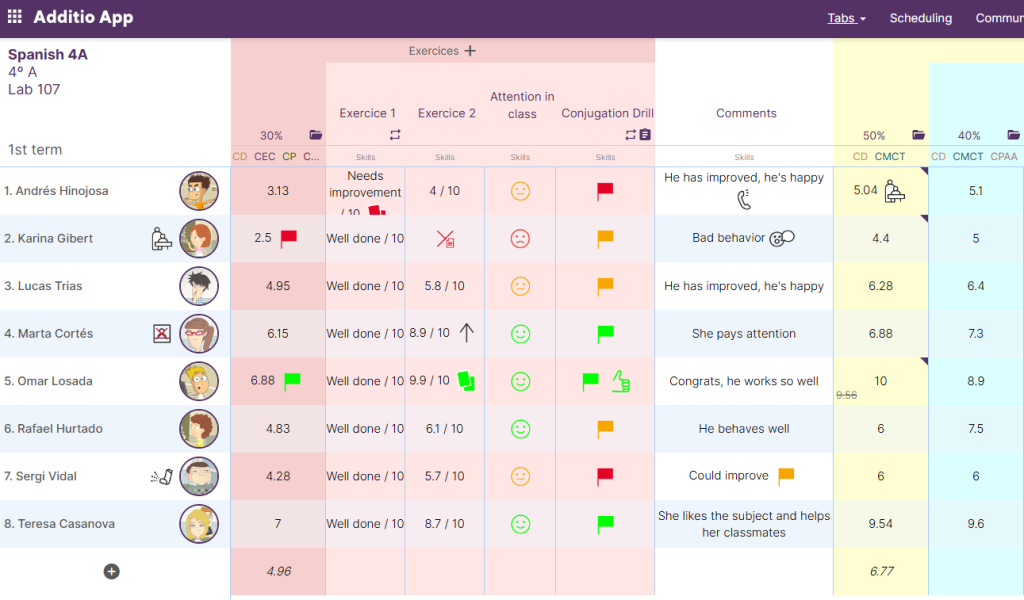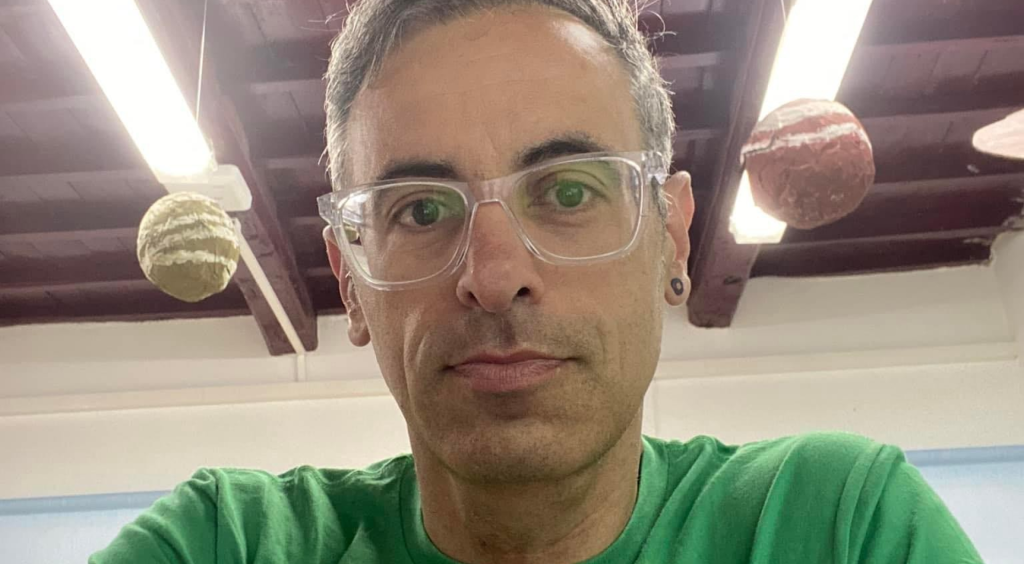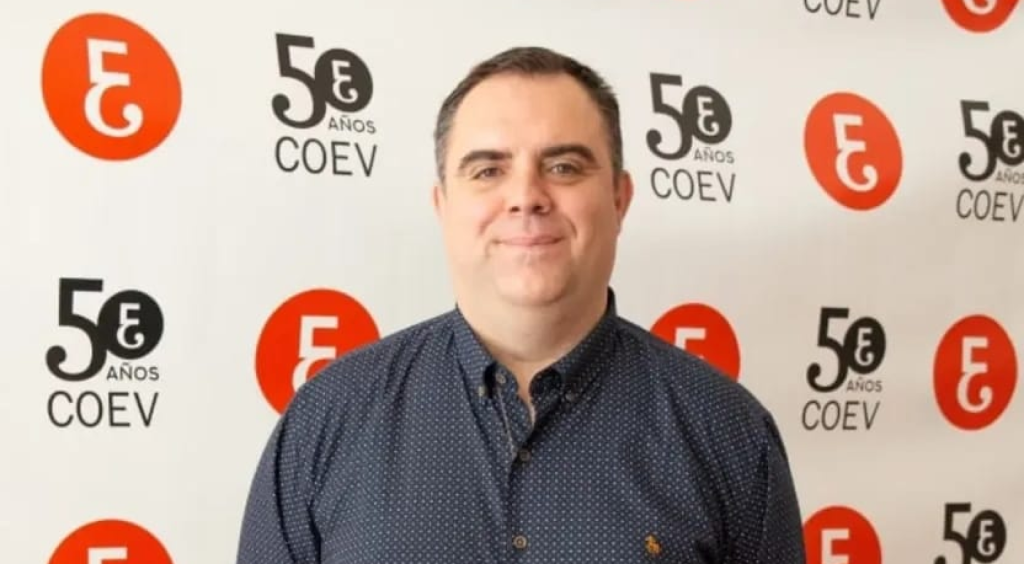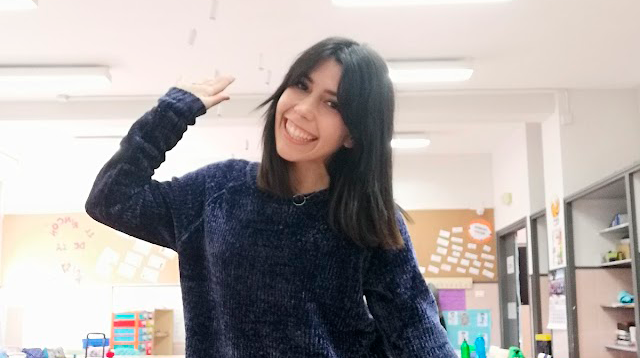In this interview, we talk with Elio Jardón, teacher and Head of Studies at Colegio Inmaculada Concepción de Cullera, whose career stands out for his passion for education, the promotion of innovative methodologies, and a strong commitment to the integration of technology in the classroom. His long experience allows him to offer a broad perspective on the present and future of teaching.
His role as an Additio Certified Teacher and Innovator has also enabled him to share his experience in training sessions and educational events, helping other teachers to make the digital leap. A truly inspiring interview for any teacher wanting to boost their teaching practice with the support of technology.
Get to know him below!
And if you want to read more teacher experiences, don’t miss this interview with Óskar Rodríguez (Primary school teacher), or this interview with José David Vidal Soler (vocational training teacher).
1. Tell us a bit about yourself and your career as a teacher.
I am a teacher with a great passion for education. I have taught in primary education across all educational cycles. I focus on developing critical and creative skills in my students, fostering their love for learning. I strive to create a positive and collaborative classroom environment, where everyone feels safe and valued. I am enthusiastic about the use of technology in the classroom to improve teaching and learning. I continuously seek new ways to improve as an educator and to provide quality education to my students.
Currently, I serve as Head of Studies for the center covering the Early Childhood, Primary, and Secondary levels. My current responsibilities include supervising academic development, coordinating the work of teaching staff, setting educational goals and objectives, developing curricula and educational programs, ensuring teaching quality, overseeing the application of educational norms and regulations, and representing the institution in public relations and education-related matters.
2. At what levels and subjects do you currently teach?
Currently, I teach Mathematics, Spanish Language, Environmental Studies (Coneixement del medi), and Interdisciplinary Projects in 6th grade of primary education, while simultaneously managing the Head of Studies role for Early Childhood, Primary, and Secondary.
3. What made you decide to enter teaching? What do you like most about your job?
I have always enjoyed learning, and I believe the best way to keep learning is to be in contact with teaching. The act of teaching not only allows me to share knowledge but also keeps me in a constant learning process. Every day in the classroom is an opportunity to discover something new, both from the content I teach and from the students I interact with. What I like most about my job is seeing the students’ progress, their moments of discovery, and the satisfaction they feel when overcoming challenges. It is a career that fills me with fulfillment and allows me to contribute to each student’s personal and academic development.
4. How would you define your teaching style in the classroom?
My teaching style in the classroom is multifaceted and innovative. I strive to be an educator who is in constant learning and who uses cooperative teaching methods to foster a collaborative environment among students. I implement critical thinking strategies to stimulate curiosity and deep analysis of topics.
Spelling and language mastery are fundamental aspects of my teaching, as I believe they are essential for effective communication and cognitive development. Regarding mathematics, I know many ways to explain complex concepts, adapting to each student’s individual needs. My goal is for each student not only to understand mathematical concepts but also to develop a passion for the subject.
I use technology as a key tool in my teaching practice, leveraging applications and digital resources to enrich learning. The integration of innovative methodologies and the use of technological resources allow me to offer a dynamic education that responds to the challenges of the modern world. In the classroom, I create an atmosphere where students feel motivated, supported, and challenged to reach their maximum potential.
5. What role do you think technology plays in teaching nowadays?
Technology has significantly transformed teaching, allowing teachers access to countless resources and tools that enrich the educational process. From interactive digital whiteboards to applications that facilitate classroom management, technology has revolutionized how knowledge is delivered and received.
In my experience, technology enables more personalized and adaptive teaching, providing students with tools to learn at their own pace and according to their needs. Additionally, it promotes autonomous learning, where the student becomes the protagonist of their own educational process, exploring, researching, and constructing knowledge with the support of digital resources.
The use of online educational platforms has made collaboration and communication between students and teachers more efficient, breaking down the physical barriers of the classroom. Resources can be shared, collaborative projects carried out, and real-time feedback given.
The integration of technology in education has also opened the door to innovative methodologies such as flipped learning, where students can access theoretical content at home through videos and digital resources and use classroom time for practical activities, debates, and problem-solving.
However, implementing technology is not without challenges. Adequate infrastructure, equitable access to devices, and ongoing training for teachers are required to make the most of these tools.
6. What are the main challenges you see in the digitalization of education?
One of the main challenges in the digitalization of education is the continuous training and knowledge of teachers. Technology advances at a dizzying pace, and it is essential that teachers are updated and trained to incorporate these new tools into their daily practice. Without adequate training, teachers may feel overwhelmed and resist integrating technology in their classrooms, which can limit the potential of these tools to improve learning.
Another important challenge is the infrastructure of educational centers. For technology to be used effectively, there must be a solid infrastructure that includes access to high-speed internet, adequate devices for all students, and efficient technical support. Lack of resources can create inequalities between schools and students, which in turn can affect the quality of education they receive.
Also, the knowledge gap between students and their parents is a significant challenge. In many cases, parents do not have the skills or knowledge necessary to help their children use technology in the educational context. This can result in a lack of support and supervision at home, which could negatively impact students’ academic performance. It is essential to promote training and technological knowledge within families as well, so they can offer appropriate support to their children in their digital learning process.
7. Artificial intelligence is increasingly present in the educational field. Have you integrated any AI tools into your teaching practice?
Yes, I have integrated artificial intelligence tools into my teaching practice, both in the classroom and in educational management. As Head of Studies and ICT Coordinator at Colegio Inmaculada Concepción de Cullera, I am committed to innovation and continuous improvement. AI has allowed me to optimize processes, personalize learning, and enrich the educational experience.
In the classroom, especially with 6th-grade students and in collaboration with 3rd year of Secondary, I have used AI tools to design activities better adapted to each student’s pace and level, to develop automated evaluation rubrics with immediate feedback, and to generate dynamic teaching materials. I have also explored virtual assistants to encourage student autonomy in reinforcement or extension tasks.
At the organizational level, AI has helped me analyze survey data and assess areas for improvement in the center’s Strategic Plan. I have also used language models like ChatGPT to draft communications, prepare content, and advise on decision-making processes, always with human supervision to ensure pedagogical criteria.
Artificial intelligence has become a very valuable ally in my work as an educator, counselor, and educational manager.
8. Do you think AI can be beneficial if used correctly?
Yes, I am convinced that artificial intelligence can be very beneficial if used properly and with pedagogical judgment. As an educator and member of the management team at Colegio Inmaculada Concepción de Cullera, I consider that AI should not be seen as a threat but as an opportunity to improve teaching-learning processes, attention to diversity, and school management.
When well used, AI can help personalize education, detect learning difficulties early, provide immediate feedback, and free up teacher time to focus on what really matters: the human and emotional support of students. Additionally, it allows for deeper data analysis to make more informed decisions both in the classroom and organizationally.
Of course, its use must always be supervised by education professionals, respecting data privacy and maintaining an ethical and critical perspective. Technology does not replace the teacher but can amplify their impact if integrated thoughtfully, with training and reflection.
9. How did you discover Additio App? When and why did you start using Additio App daily?
I discovered Additio App through training on digital competencies and ICT tools applied to teaching. I started using it regularly several academic years ago, coinciding with the need to digitalize classroom management, make student monitoring more efficient, and adapt to the competency-based evaluation requirements of the LOMLOE. As ICT Coordinator and Head of Studies, I also saw clearly its potential to unify criteria and facilitate the work of teaching teams.
10. How has your way of managing the classroom changed since using the tool?
Additio has meant a true transformation. I have moved from a traditional record-keeping model to a more agile, visual, and precise management system. I can make pedagogical decisions based on data, keep a more detailed control of each student’s progress, and coordinate better with other teachers. It has also allowed me to focus more on pedagogy and less on administration.

11. What Additio App features do you use the most, and why?
The features I use the most are:
- Personalized gradebooks, which allow me to reflect rubrics, achievement levels, and qualitative observations.
- Weekly and unit planning, ideal for linking criteria, skills, and learning situations.
- Rubrics and automatic calculation, especially adapted to the grading scale we use at the school (Excellent, Notable, Sufficient, Needs Improvement, Not Presented).
- Report generator, to communicate student progress clearly and facilitate meetings with families.
12. Evaluating according to LOMLOE has been a challenge for many teachers. How do you use the app to foster competency-based evaluation?
Thanks to Additio, I can directly link each classroom activity to evaluation criteria and specific competencies. The tool allows me to record both quantitative and qualitative learning evidence, work with competency rubrics, and carry out formative monitoring that goes beyond the grade. It also facilitates work by domains and the global evaluation of students’ competency profiles.

13. If you could only keep one Additio App feature to take with you to a desert island, which one would it be and why?
Without a doubt, I would take the teacher’s gradebook. It is the heart of the application: I have everything centralized there — planning, monitoring, evaluation, observations, rubrics, and grades. It is the tool that gives me a global vision of the teaching-learning process and allows me to personalize attention to each student, even in changing contexts.
14. What motivated you to certify as an Additio Certified Teacher?
What motivated me to certify as an Additio Certified Teacher was recognizing all the advantages of moving from paper gradebooks to digital. The time I saved, the efficiency in classroom control, and the teaching and evaluation process of students were decisive factors. Also, the possibility of having everything related to my work centralized on a single platform greatly simplified my daily management.
15. As recognition of your involvement in the Additio App community, you were offered the opportunity to become an Additio Certified Innovator. What does being an Additio Certified Innovator mean to you?
Being an Additio Certified Innovator means being recognized as a teacher who innovates and helps others improve through technology. It is a privilege to share knowledge and experiences with other educators and contribute to the continuous improvement of teaching practices and educational management. It motivates me to keep learning and inspiring others.
16. You have participated in trainings and webinars, what motivates you to share your experience with other teachers?
I have participated in several trainings and webinars over the years, including events such as “The Classroom of the Future in a European Context” in Burjassot in February 2018, several Erasmus+ KA1 projects in Valencia in October 2018, the “III MIAC Conference – Gamification in the Classroom” in Madrid in March 2022, and more recently, “The Student at the Center of Learning” and the “Educational Summit” on YouTube in May 2023 and 2024, respectively.
What motivates me to share my experience with other teachers is the opportunity to collaborate and learn together. Each session is a platform to exchange innovative ideas and best practices, and to inspire others to adopt pedagogical approaches that can improve student learning. Furthermore, these events allow me to stay up-to-date with the latest trends in education and technology. This is essential to continue evolving in my teaching role and maximize impact in the classroom.
17. If you could give advice to a teacher just starting out in the classroom, what would you say?
I would tell them not to try to do everything perfectly from day one, to listen carefully to their students and colleagues, and to dare to try new things. To look for tools that help them get organized and focus on what really matters: supporting learning processes. And above all, to never lose their enthusiasm. Technology, when used well, can be a great ally, but the most important thing remains the pedagogical perspective and the human connection.
18. How do you envision the future of assessment and teacher management with digital tools?
I imagine assessment becoming increasingly personalized, continuous, and formative. Digital tools like Additio will allow a clear visualization of students’ competency progress. Artificial intelligence will help us detect patterns, generate automatic reports, and adapt teaching to the real needs of each student. But it will also be essential that these tools serve the professional judgment of teachers, not the other way around. The key will be to maintain a balance between digital efficiency and educational humanity.





